Archive for the 'Uncategorized' Category
August 8th, 2014 by dave dorsey
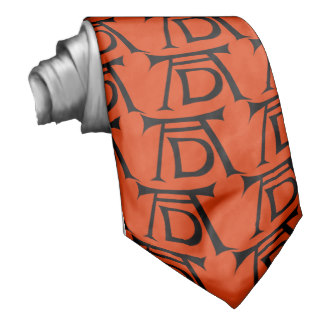 Business Insider ranks Albrecht Durer as having the fourth coolest signature in human history. For some reason, it always looks kind of samurai to me. Go Al. Ahead of Picasso, but behind Banksy. (That’s just wrong.) Somebody needs to unseat John Hancock.
Business Insider ranks Albrecht Durer as having the fourth coolest signature in human history. For some reason, it always looks kind of samurai to me. Go Al. Ahead of Picasso, but behind Banksy. (That’s just wrong.) Somebody needs to unseat John Hancock.
August 6th, 2014 by dave dorsey
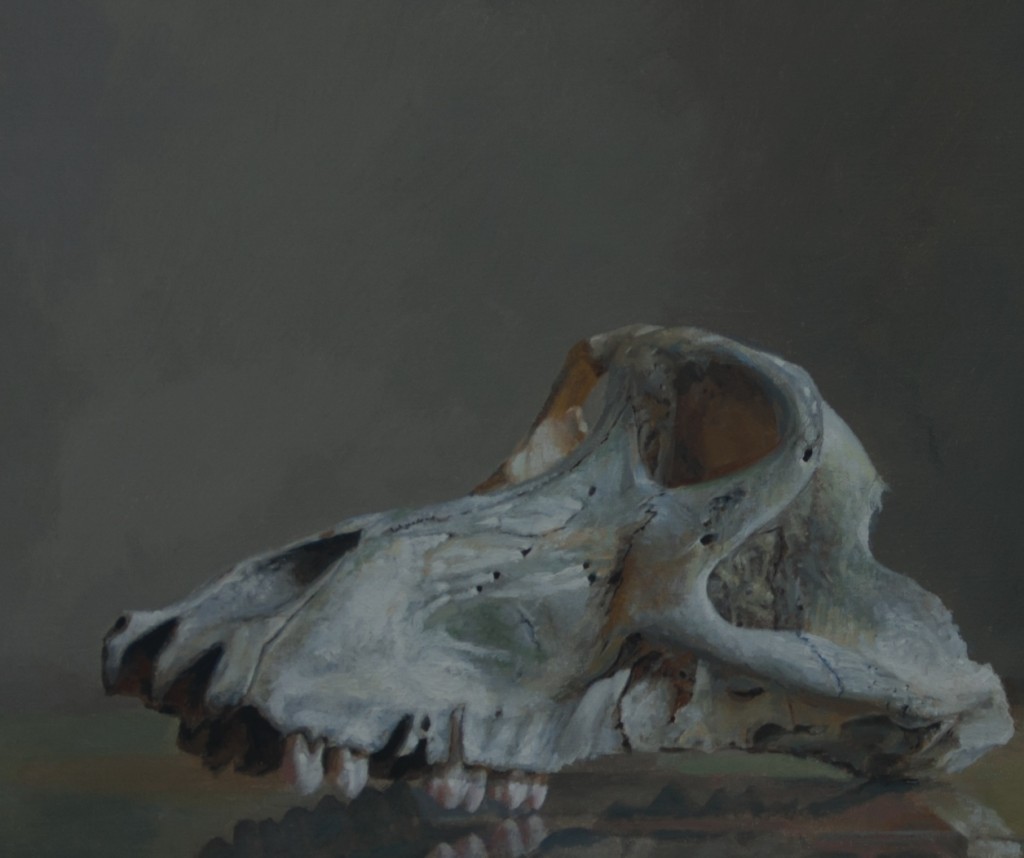
Baboon, detail
I have work in several exhibitions this month and into September:
Next April I’ll be showing new work in a two-artist exhibition at Oxford Gallery.
August 4th, 2014 by dave dorsey

So it isn’t Niagara Falls, but it’s our falls.
After a few months of either scrambling to put together and then take down the solo show in Chelsea, as well as working feverishly on a book proposal with Peter Georgescu, I’ve got a little down time between writing sessions. I haven’t painted in weeks, and my batteries are recharged, which is good, because I have a two-artist show at Oxford Gallery in April, and I need to do more than a dozen new paintings for it, but at the moment I can’t. Soon though.
I did a little yard work this weekend. On Saturday afternoon, after a brief thunder shower, I sat under our cherry tree that drops one or two butterscotch-colored leaves every day, as it always does starting in late July, getting a head start on autumn mid-way through the summer. It’s been especially cool for about a week here in the eye of the polar vortex, but aside from a little too much rain for a few days, I’m loving the weather. I think our cherry, which serves as a huge beach umbrella over our brick patio, has been fooled, at night, into believing it’s October already.
It’s been a summer of fulfillment in our yard, bushes and trees and plants I put in back in 2004 have matured, fully grown or at least as large as I’d like them to be. Everything in the garden and lawn seems developed now, after all these years of tending, feeding, pruning. In the spring, I raised the beds around the patio and wheelbarrowed half a yard of topsoil into the boxes I built with pressure-treated lumber and anodized door hinges, so that the lengths will form a half-circle around the back of the bed. As a result, the dahlias are nearly seven feet tall already in some places, because of the new soil and the excellent drainage, and everything else is thriving in these intermittent showers we’re getting, along with plenty of sun: rudbeckia, phlox, begonias, campanula, shasta daisies, nasturtiums and a few petunias here and there. Nothing exotic or labor intensive, but I’m looking at all of this growth now Continue reading ‘Stalled, but still looking’
July 31st, 2014 by dave dorsey
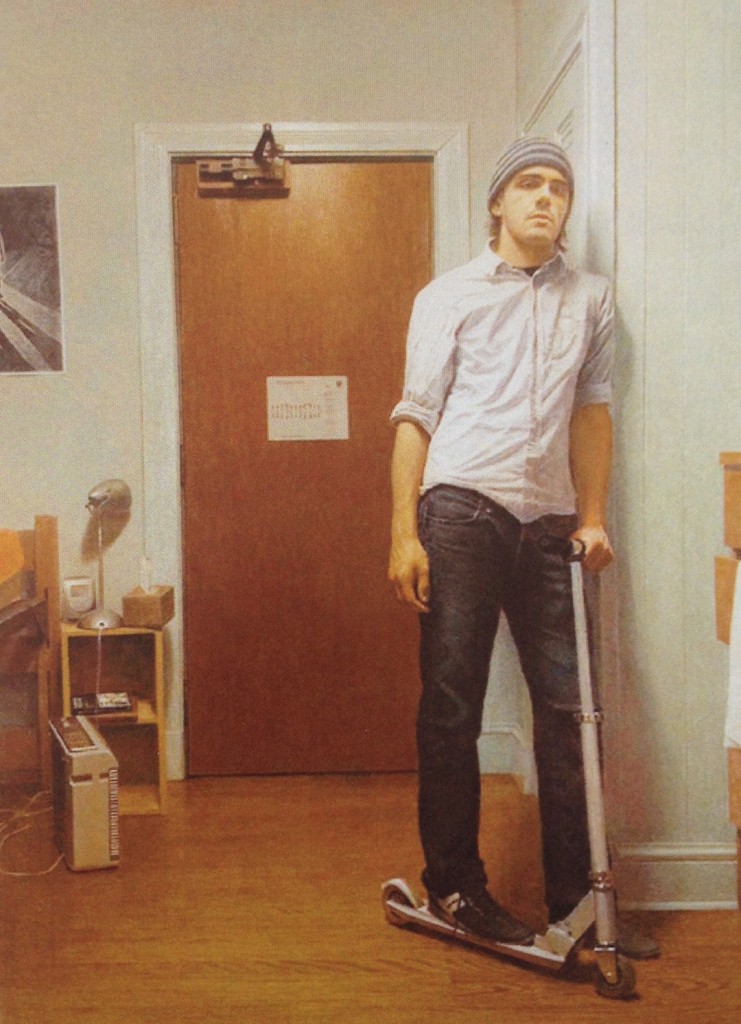
Miracles of Modern Science, John Younger, oil, 68″ x 48″
I was pleased to be included in the 78th Midyear Exhibition at the Butler Institute, and to have been awarded an Honorable Mention for Carpe Diem: Autumn’s Last Flowers, which was one of the works in my solo show at Viridian Artists this summer. The catalog for the show arrived today, and it was heartening to see so much great work in the exhibition. I made it into last year’s Midyear as well, yet the work in that show I found a little discouraging, though chalked it up to the fact that I was looking at thumbnail reproductions. This year, though, even at such a small scale, the bulk of the art looks great. There’s a marked emphasis on the human figure and portraiture, and some of my favorites in the show depict people set in unexpected settings, or presented in surprising ways, all rendered with amazing skill: Miracles of Modern Science, by John Younger, Brooklyn, by Marc Winnat, and Earth Angels, by Allan Charles Orr. It’s cheering to see so much representational art, many of them beautiful in a way that isn’t cloying. Plenty of abstract work got into the show. Even without the award, I was honored to be included.
July 27th, 2014 by dave dorsey
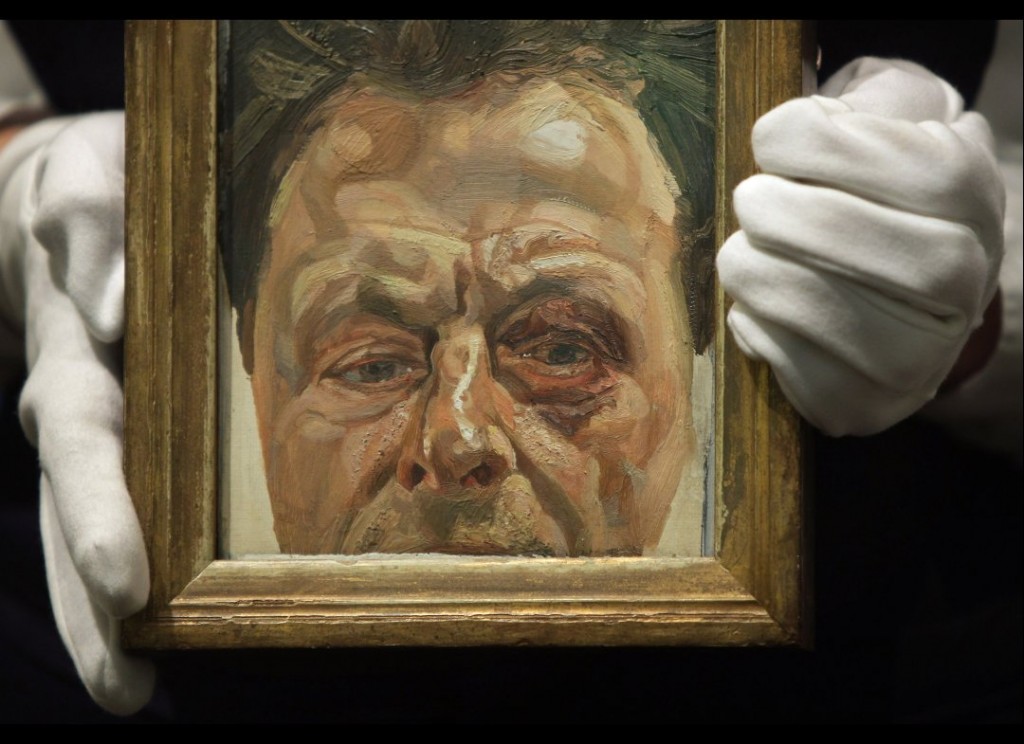
In that order? From today’s Book Review:
“Freud’s early works were strongly marked by Morris’s influence, with an exquisitely linear style, brittle and subtly exaggerated. What you remember about them — and they are mostly portraits — are the subjects’ wide, haunted eyes. One sitter later recalled how “he always started with an eyeball, then he imprisoned the eye and then an eyebrow, then a nostril.” Freud hadn’t much money in those days, but he never lacked for patrons or for opportunities to pursue his “violently closely held belief to carry on with lords and ladies,” as one of his daughters put it. He enjoyed the lowlife just as much. By the mid-’50s, though, his art dissatisfied him. “I was getting approval for something that wasn’t of great account,” he felt, and he found his way toward the more painterly, rather clotted and lugubrious style that made him rich and famous. Freud recalled how Kenneth Clark, the former director of the National Gallery, “wrote a card saying that I had deliberately suppressed everything that made my work remarkable . . . and ended, ‘I admire your courage.’ I never saw him again.”
Clark was fundamentally right, I think, and yet Freud remains a fascinating artistic oddity, his work unlike anyone else’s. This brief biography by Phoebe Hoban — the author of full-length lives of Alice Neel and Jean-Michel Basquiat — negotiates with equanimity a life that seems a disorderly maelstrom of sex, fighting, art, gambling, all obsessively pursued and so mixed up it’s sometimes hard to tell one from the other.”
July 26th, 2014 by dave dorsey
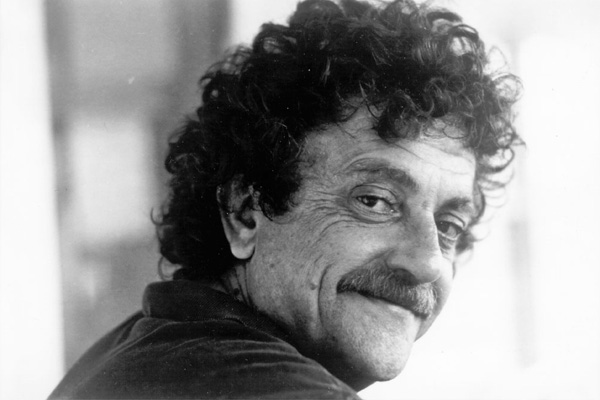 As a follow-up to my last post, a friend sent me this:
As a follow-up to my last post, a friend sent me this:
Kurt Vonnegut: “…my father, who struggled to become a painter after he was forced into early and unwelcome retirement by the Great Depression. He had reason to be optimistic about his new career, since the early stages of his pictures, whether still lifes or portraits or landscapes, were full of pow. Mother, meaning to be helpful, would say of each one: “That’s really wonderful, Kurt. Now all you have to do is finishit.” He would then ruin it.”
July 23rd, 2014 by dave dorsey
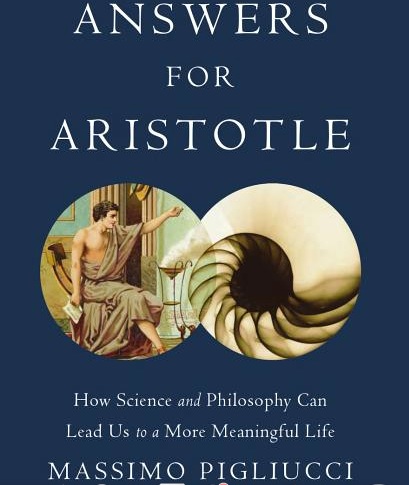
This is interesting, from Brain Pickings, a quote from a book on intuition, Answers for Aristotle:
Research on acquiring skills shows that, roughly speaking, and pretty much independently of whether we are talking about a physical activity or an intellectual one, people tend to go through three phases while they improve their performance. During the first phase, the beginner focuses her attention simply on understanding what it is that the task requires and on not making mistakes. In phase two, such conscious attention to the basics of the task is no longer needed, and the individual performs quasi-automatically and with reasonable proficiency. Then comes the difficult part. Most people get stuck in phase two: they can do whatever it is they set out to do decently, but stop short of the level of accomplishment that provides the self-gratification that makes one’s outlook significantly more positive or purchases the external validation that results in raises and promotions. Phase three often remains elusive because while the initial improvement was aided by switching control from conscious thought to intuition—as the task became automatic and faster—further improvement requires mindful attention to the areas where mistakes are still being made and intense focus to correct them. Referred to as ‘deliberate practice,’ this phase is quite distinct from mindless or playful practice.
This reminds me of a point in painting where the painting is good enough, or at least as good as one’s work has been up to this point in my life, and there’s a fork in the road: either you consider it finished or you keep investing time in the areas where it seems to fall short, upon close inspection, but in ways that only I would probably notice. That seems like a self-indulgent or risky investment of time, since it isn’t clear that more work will make the painting more effective in the eyes of anyone else. Knowing what’s “good enough” is, in fact, part of what makes certain quickly executed paintings great. They do their work so economically that more effort would drain the life out of the marks already applied to the surface. I find myself at that fork in the road while doing a lot of paintings now. This passage from Answers for Aristotle also seems to point toward a period of mastery when you realize you can reliably do whatever you have chosen to do, up to that point in your painting life, but then you find yourself asking the question “This is what I can do. What it is I most deeply want to do with all these acquired skills?”
July 21st, 2014 by dave dorsey
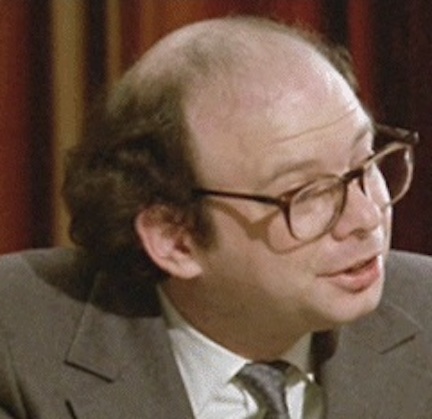
Wallace Shawn
“I have an enormous appetite to see life as I know it presented in front of my eyes.
That seems strange—after all, why don’t I just walk out into the street? But the thing is that you can’t really look at things out in the street, much less in your own apartment or in your friends’ apartments. You can look in the theater in a completely different way from the way you can look in life. You’re allowed to really look at a play—even stare.
In life, you are a character in the scene. When you’re a character in the scene, you can’t really look at the scene. If someone’s talking to you, you must respond appropriately. You can’t just stare at the person. You can’t look at life with the degree of attention and focus that you can employ when you look at a play, because you have to participate. And the people you’re staring at would find it rude. But if you’re sitting in an audience watching a scene, you can focus your entire being on looking at that scene. It’s a very special privilege.
In . . . Les Éphémères, they had a scene where a fisherman and his wife and some other people have taken their children on an outing, and they come home, and they put the kids to bed. The kids are already asleep—they’re very young children—and they carry them in asleep, and they put them to bed. It takes probably fifteen minutes, or at least ten. No talking. Now, I have very little interest in family life, in children, et cetera. If you said, We’re now going to do a ten-minute scene about putting children to bed, I would be bored before you even finished the sentence. But it was so true and so real and so interesting. It was beautiful, and I was moved by it.”
–Wallace Shawn, The Paris Review
July 19th, 2014 by dave dorsey
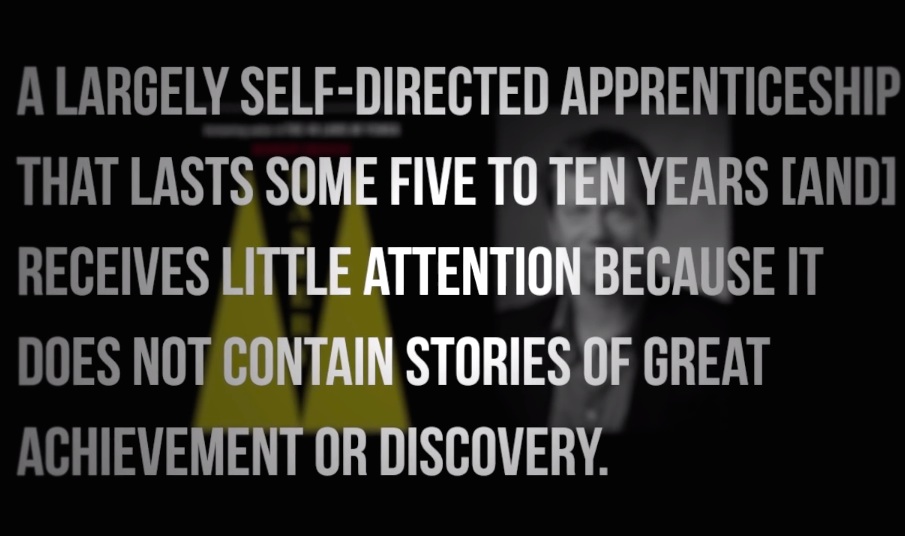 Great short video on working in obscurity. Leonardo: fail, fail, fail, fail, fail . . . success. “John Coltrane practiced the saxophone feverishly every single day for seventeen years before he got his first big hit . . . ” A previous video shows you a whole rogue’s gallery of losers in their twenties who eventually quit losing. “Leonardo got his big break when he was 46.”
Great short video on working in obscurity. Leonardo: fail, fail, fail, fail, fail . . . success. “John Coltrane practiced the saxophone feverishly every single day for seventeen years before he got his first big hit . . . ” A previous video shows you a whole rogue’s gallery of losers in their twenties who eventually quit losing. “Leonardo got his big break when he was 46.”
July 17th, 2014 by dave dorsey
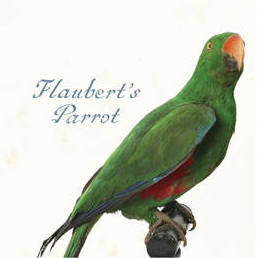 “Works of art . . . (create) about them a confluence of simple hearts, a community united not in what they are . . . but in the collective mystery of what they are not and now find embodied before them. Unfortunately, the democracy of simple hearts is founded on the dangerous assumption that gorgeous parrots, hewn from what we lack . . . will continue to make themselves visible and available to us. But this is not necessarily so. Flaubert is dead, and the disciplines of desire have lost their urgency in the grand salons of comfort and privilege we have created for the arts. The self-congratulatory rhetoric of sensibilite continues to perpetuate itself, and in place of gorgeous parrots, we now content ourselves with the ghostly successors of Marie Antoinette’s peasant village, tastefully installed within the walls of Versailles.”
“Works of art . . . (create) about them a confluence of simple hearts, a community united not in what they are . . . but in the collective mystery of what they are not and now find embodied before them. Unfortunately, the democracy of simple hearts is founded on the dangerous assumption that gorgeous parrots, hewn from what we lack . . . will continue to make themselves visible and available to us. But this is not necessarily so. Flaubert is dead, and the disciplines of desire have lost their urgency in the grand salons of comfort and privilege we have created for the arts. The self-congratulatory rhetoric of sensibilite continues to perpetuate itself, and in place of gorgeous parrots, we now content ourselves with the ghostly successors of Marie Antoinette’s peasant village, tastefully installed within the walls of Versailles.”
–Dave Hickey, Air Guitar, “Simple Hearts”
July 15th, 2014 by dave dorsey
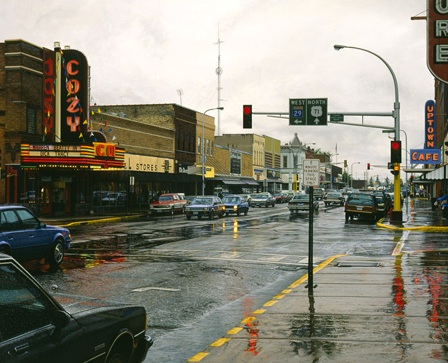
Cozy/Rainy Day, Davis Cone, acrylic on canvas
July 13th, 2014 by dave dorsey
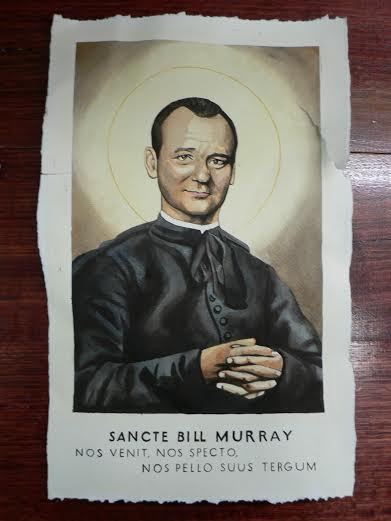
Saint Bill
Submissions until July 21 for the all-Bill Murray exhibition at Public Works in San Francisco. It could be so much better than much of what appears here. Opens Aug. 8.
July 10th, 2014 by dave dorsey
 From Esquire:
From Esquire:
SS: It’s at the center of everything, this idea of narrative and stories. So I am always thinking about it: Is there another way to do it? That’s why I was so fascinated and obsessed with the cave paintings in France. I’m like, “Fuck, there it is. The first stories.” I draw a little bit and was like, “Somebody practiced those.” 30,000 years ago you have your forehead out to here, you don’t just pick up a piece of charcoal and do that. That was something that struck me as “Where’s the practice board?” The other thing that I’m interested in, which is tangential, but not unrelated… All art to me is about problem solving. So I’m obsessed with problem solving. Somewhere someone discovered something or somebody was tasked to figure something out and they did. What did they figure out and how? One of the things that I believe is true is the art model of problem solving is incredibly efficient because ideology has no place there. There’s only the thing and what the thing needs to be. When I look around the world and think why is everything working or not working, it’s because it’s entrenched ideology. You can’t solve a problem if you’re sitting down with people who say, “All these ideas are off the table because of what I believe.”
July 1st, 2014 by dave dorsey

Matthew Barney
I saw all of The Cremaster Cycle at the Guggenheim when the show was up . . . God, was it that long ago? My response was something like Bill Murray’s in Tootsie while he was watching the soap opera: “That is one nutty hospital.” My only reservation by the end of the five feature-length films was that I still didn’t know what the eye at the top of the pyramid on the back of a dollar bill is looking at, though I admired Barney’s attempt to cover just about everything else in human life. The rest of the exhibition taught me what the word vitrine means though I’ll probably never have a chance to use that word after this post. So far I’ve taken a pass on “River of Fundament,” a title that makes me smile, as I’m sure it’s meant to, though I really did admire Barney’s filthy Irish energy the first time around. Plus, like me, he grew up in Idaho, so I have to root for him. But being on Barney’s side is like putting money on the New England Patriots, isn’t it? (Go Bills!) This amused me:
“We hear about Matthew Barney’s six-hour film of Norman Mailer’s seven-hundred-page Ancient Evenings, an unwatchable adapation of an unreadable book, and we think, Hey that might be great! It’s the American way.”
—Adam Gopnik, “Go Giants”, The New Yorker, April 21, 20145
(I’m off to attend my son’s wedding in Mexico for the rest of the week, if we can trust United to get us there. We missed our originating flight this morning, which is why I was catching up on Gopnik.)
June 26th, 2014 by dave dorsey
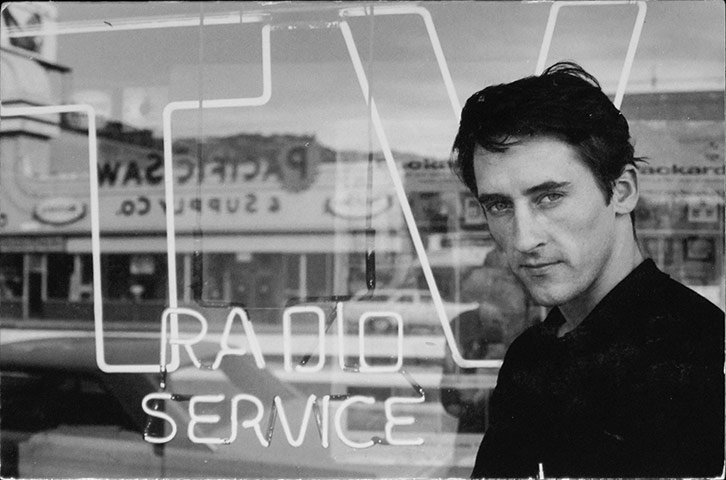
Ed Ruscha, Dennis Hopper
June 21st, 2014 by dave dorsey
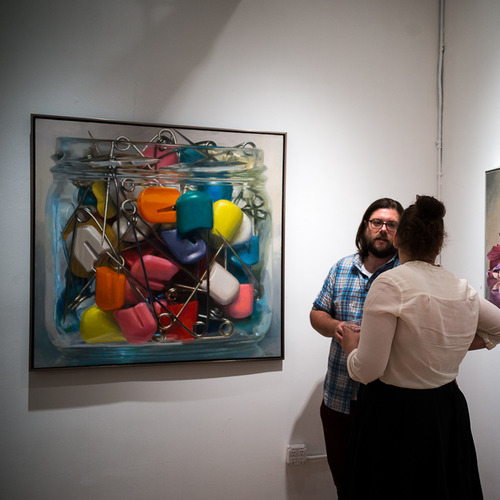
The Vernissage approved of my solo show at Viridian Artists, and to read their squib about it, you have to scroll down through images of Coca-Cola machines containing the bodies of dictators, from an exhibit at Unix Gallery. I was amused to see my diaper pins juxtaposed against images from a show containing an effigy of Generalissimo Franco. I’m relieved to know he’s still dead. It’s been decades since I was reminded of that on Saturdays. I liked the photography they posted of “Polarities”, along with the commentary:
Last week, our usual tour in Chelsea presented some fun surprises. Moreover, all the galleries we encountered presented entertaining works that revealed that ironic approach that we really, really enjoy. Viridian Artists Gallery presented a solo by David Dorsey . . . the space filled with a series of . . . modern still lifes. M&M’s, a burger and pins here take the place of the more classical fruit and vegetables on canvas. An opposite experience . . . gorgeous but, somehow, wrong. The show played with the idea of opposites, portraying, in the same way, objects related to both death and everyday life.
Wikipedia: A vernissage (varnishing, from French) is a term used for a preview of an art exhibition, which may be private, before the formal opening.
June 20th, 2014 by dave dorsey

Jos Van Riswick, Oil, 2013
June 18th, 2014 by dave dorsey
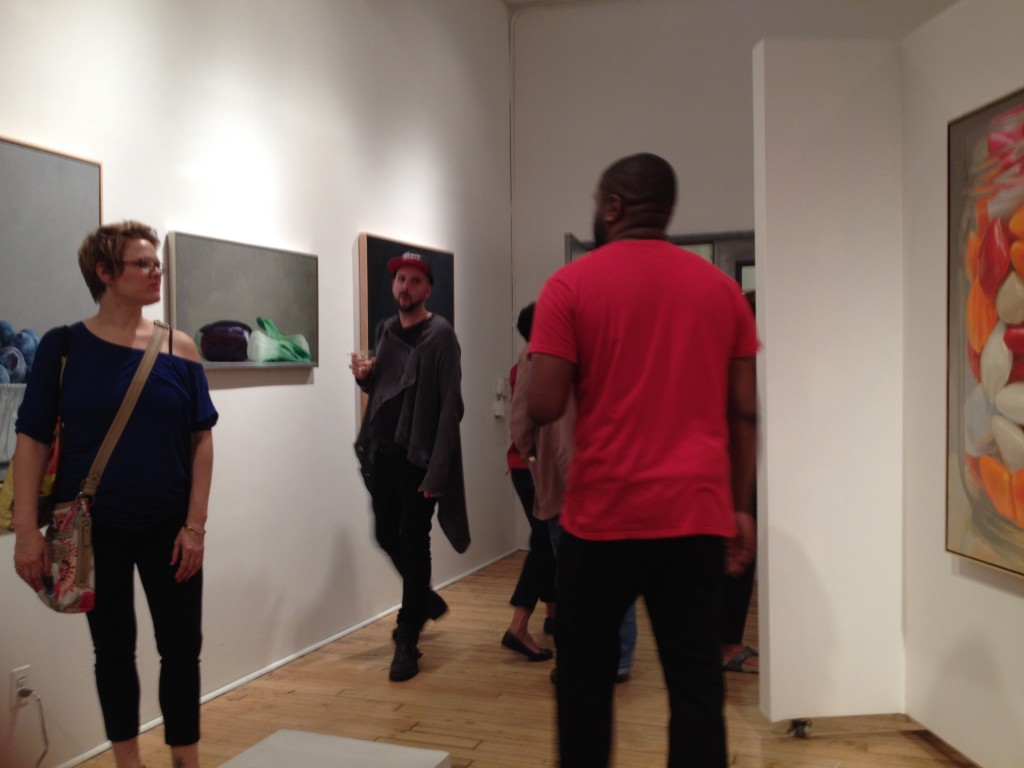
I just got back from a long, lively conversation with probably the most accomplished painter in Western New York, Tom Insalaco. He called yesterday and asked to meet for coffee. He was dropping off a painting at Oxford Gallery and then heading to the Joy Adams lecture at Axom Gallery. So we met at Barnes & Noble. We talked about general cultural decline, the economy, the Pacific vs. the Gulf of Mexico, spastic young men in wheelchairs who make Tom nervous when they are in the proximity of great Dutch paintings, computer billionaires, Odd Nerdrum in prison for tax evasion, the Arcadia gallery in SoHo, the merits of acrylic vs. oil, but more than anything else we talked about Van Gogh and Vermeer. He’s reading the recent book which presents nearly a thousand pages on Van Gogh’s life plus the theory that Vincent was shot by two young men fooling around with a gun. I brought up the two great V’s because they appear to have painted with little or no thought to personal reward or recognition, as Tom himself has done, making a living almost entirely from teaching art. On the subject of Vermeer, Tom said the painter had at least one buyer who acted as a patron, but I maintained it was hard to believe he could have made a living from his work. Van Gogh stands as the finest example of devotion to painting without recognition or reward, and Tom agreed. “He wasn’t crazy. He was highly intelligent and well-read. He and the rest of his family wrote letters constantly to one another. He spoke four languages fluently. You look at the surface of those paintings, the thick impasto, and not a scratch, not a bit of grit—how did he manage to get them back from the fields without damaging them?”
He paused.
“But was it a fulfilling life?”
His remark reminded me of that Ingmar Bergman line from MORE
June 14th, 2014 by dave dorsey

Jens Lennartson with his army of tiny 3D selfies
Jens Lennartsson had a small company of miniature G.I. Jens created and sent out these action figures to promote himself as a photographer. A photographer I know here in Rochester has done similar things to promote himself as a writer, without the aspect of mass production.
Being a realist and all, I should create an inaction figure of myself.
June 12th, 2014 by dave dorsey
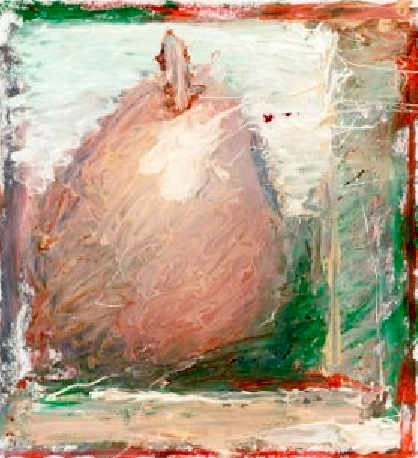
Bill Creevy, Small Pear, oil on multimedia board, 5″x4″
From the First Street exhibition announcement:
Bill Creevy will show selections from his newest series of miniature oils on paper. Creevy’s imagery varies from intimate depictions of animals, to greenmarket finds, to vintage cars, to airplanes, to small scale panoramic landscapes. Though Creevy’s oils are quite small (many no higher than 5″), his paint application is assertive and open in the manner of the early action painters. Notable for their highly textural surfaces, luminous paint freely applied, and bold rich colors, these small confident paintings pulse with memory and glow with vitality.
Love his artist’s statement:
I like to do simple and straight forward paintings. My scale is small but my paint application is assertive. I let my imagination pick my subject matter and allow my paint strokes to go where they please. I give myself very few restrictions……
 Business Insider ranks Albrecht Durer as having the fourth coolest signature in human history. For some reason, it always looks kind of samurai to me. Go Al. Ahead of Picasso, but behind Banksy. (That’s just wrong.) Somebody needs to unseat John Hancock.
Business Insider ranks Albrecht Durer as having the fourth coolest signature in human history. For some reason, it always looks kind of samurai to me. Go Al. Ahead of Picasso, but behind Banksy. (That’s just wrong.) Somebody needs to unseat John Hancock.

















